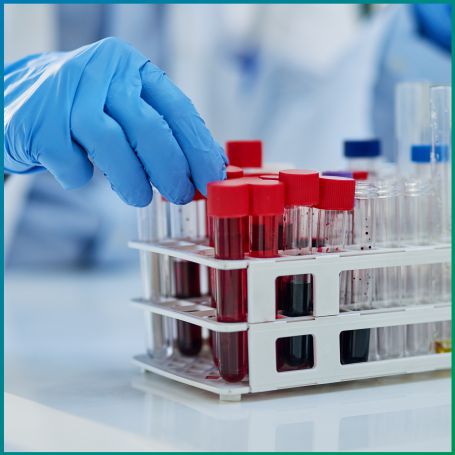
The Anti-D Titer Test is a blood test that measures the presence and concentration of Anti-D antibodies in a person’s blood, particularly in Rh-negative individuals.


This ANTI D TITER test is essential in managing Rh incompatibility during pregnancy, where an Rh-negative mother might carry an Rh-positive fetus. Rh incompatibility can lead to complications in pregnancy if the mother’s immune system develops antibodies against the fetus’s red blood cells, potentially leading to hemolytic disease of the newborn (HDN). The Anti-D Titer helps in monitoring and managing this risk by assessing antibody levels and guiding preventive measures.
The Anti-D Titer Test measures the levels of Anti-D antibodies in the blood. These antibodies are produced in response to exposure to Rh-positive blood, either from a previous pregnancy, blood transfusion, or fetal-maternal blood mixing. By measuring the antibody titer, healthcare providers can evaluate the risk of hemolytic disease and take proactive steps to protect both mother and fetus.
Anti-D titer results are expressed in ratios, such as 1:2, 1:4, 1:16, or 1:32, where higher values indicate a greater concentration of antibodies. Here’s how they are interpreted:
1:2 or 1:4: These low titers suggest minimal antibody presence, often indicating a lower risk of fetal harm. Monitoring may still be needed.
1:16 or higher: These levels suggest a more significant presence of antibodies, posing a higher risk for fetal complications, such as hemolytic disease of the newborn (HDN).
The titer threshold for concern typically starts at 1:16 for severe complications in pregnancies where Rh incompatibility is a concern, though this can vary based on clinical guidelines and individual circumstances.
The Anti-D Titer Test is critical in pregnancy management and is often performed in Rh-negative pregnant women to:
Evaluate Rh Incompatibility Risk: The test helps assess the likelihood of an immune reaction in the mother against fetal red blood cells.
Monitor Fetal Health: Regular titer tests allow healthcare providers to monitor antibody levels, enabling them to identify any increasing risk to the fetus.
Guide Treatment Plans: If high titers are detected, interventions like intrauterine transfusions or early delivery might be planned to mitigate complications for the baby.
In pregnancy, the Anti-D Titer Test is crucial for Rh-negative mothers. If antibody titers are low (such as 1:2 or 1:4), the risk of fetal harm is generally lower, but monitoring continues throughout the pregnancy. Higher titers, such as 1:32 or above, may prompt additional interventions, such as Doppler ultrasound monitoring or other fetal evaluations to detect and address early signs of anemia or distress in the fetus.
You should choose Diagnopein for your ANTI D TITER test because we are committed to providing high-quality diagnostic care in a clean and hygienic environment. Our center is equipped with advanced technology to ensure accurate and reliable test results, which are crucial for assessing this test. Diagnopein’s experienced staff is dedicated to handling tests with precision and care, offering you both expertise and comfort. We also offer affordable pricing, making essential health diagnostics accessible without compromising quality. For timely, professional, and affordable cardiac testing, Diagnopein is your trusted partner for your healthcare.
If the anti-D titer increases, it could signify rising antibody activity, heightening the risk of fetal complications. Your healthcare provider might recommend additional tests or interventions to ensure the fetus’s health.
While the test indicates risk, it doesn’t guarantee that HDN will develop. It helps guide proactive management to minimize the chances of complications.
A negative anti-D titer means no detectable antibodies, suggesting a lower risk of incompatibility issues. However, your doctor may still monitor for any potential exposure.
A titer of 1:32 indicates a relatively high concentration of anti-D antibodies. This level may suggest an increased risk of complications, so additional monitoring is usually recommended.
A 1:4 titer is low, and while it suggests some antibody presence, it generally poses a lower risk. Regular monitoring helps ensure that levels remain manageable.
Testing frequency varies based on the initial titer level and risk factors. Low titers may require less frequent testing, while higher titers (1:16 or above) often necessitate more regular monitoring.